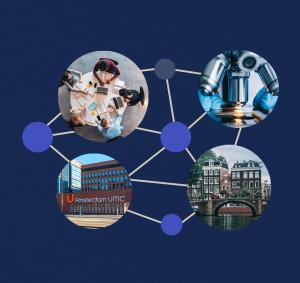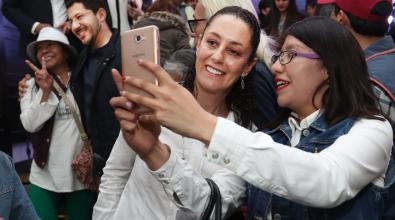 Read More
Read More
Taking city-university partnerships to the next level

Listen to This Article
Universities have strong research skills and loads of data, and many city halls need better information and ways to understand what works for their communities. Teaming up makes a lot of sense, but there’s frequently a disconnect—often because academic institutions are focused on research that can be published in journals, while city halls are looking for immediate, practical help with real-world issues.
Better integrating the expertise of local knowledge centers into tangible city solutions (and specifically climate solutions) is a goal of a recent report from Professor Caroline Nevejan—chief science officer of the city of Amsterdam—and colleagues in similar roles in cities across Europe. The report, which builds on Dr. Nevejan’s framework for aligning researchers with city residents and leaders, offers valuable insights for local governments worldwide as they look to harness city knowledge and partnerships to build promising futures for their communities.
Developing research questions together in a bona fide partnership.
City-university partnerships can struggle due to differences in culture, accountability structures, and methodologies between local leaders and academics. To address this, Dr. Nevejan and her colleagues launched the City Science Initiative, which shares tools, practices, and lessons learned from some 20 cities, and identifies effective strategies.
A key finding is that partnerships thrive when they are collaborative from the outset, with universities, cities, and residents co-creating research questions rather than applying pre-existing solutions. This calls for establishing clear connections—which is to say forums for mutual learning, including interactive workshops—between residents, leaders, and researchers before launching a new initiative.
“If you're engaging [with cities and residents], your research questions change,” Dr. Nevejan, whose home base of Amsterdam has been supported by the Bloomberg Philanthropies innovation team ("i-team") program, tells Bloomberg Cities.
Dr. Nevejan offers the example of a meeting she had with professors who were focused on energy transition and, specifically, a battery-powered solution for a community. Combining the academic partners’ technical expertise with city-specific insight—into everything from uncertain land ownership to the limits on local government authority to mandate resident uptake—helped push the work to the next level, she says.
Deploying chief science officers—or similar leaders—as orchestrators.
Virtually every partnership between cities and knowledge institutions calls for some kind of point person to manage the work on both sides. But most cities don’t have a chief science officer, the role held by Dr. Nevejan and about two-dozen of her colleagues across the European continent.
As Dr. Nevejan explains, chief science officers “bring together the people who have the capacity to change the course of events and the people who are creating the state of the art.” In other words, they close the gap between the local leaders who have authority and a mandate to overhaul service delivery, procurement, and other vital tasks on one hand, and the experts at the cutting edge of their fields on the other.
While hiring for this sort of role might be difficult for budget-strapped leaders, more important than the title or the department is for cities to have someone consistently tasked with overseeing research efforts and orchestrating city-university collaborations. In some cases, such partnerships in the United States lean on chief innovation officers.
More broadly, cities are often already producing significant amounts of valuable research inside individual agencies. Dr. Nevejan advises local leaders to consider allowing subject-matter experts on their teams to spend a few hours a month assembling their own research and sharing with colleagues across the local knowledge landscape. That may serve to help create a nexus where cities and universities collaborate more routinely, in the long-term.
“I can speak many professional languages, but it's more that I create a third point that all can relate to,” Dr. Nevejan says.
Engaging in dialogue with researchers around metrics for local impact.
Local leaders may find that they sometimes lack the scientific know-how they need to develop meaningful benchmarks for short-term action on a host of priorities. And while Dr. Nevejan’s report focuses on climate, it shows university partnerships can help address this gap on a wide range of issues.
Universities “have methodologies they can apply to show impact. And they can do it in a scientifically sound way,” Dr. Nevejan says.
For example, the report suggests cities team up with universities to call for a greater social return on procurement. It’s an idea that’s already being put to the test in Hamburg, Germany, with a new approach to identifying reusable and recyclable materials prior to building demolitions. As the report notes, the effort has been “developed through dialogue, testing approaches, incorporating the experience of private partners, taking into account public requirements, and supported by the knowledge of scientific stakeholders.” The ambition is to build a public database where businesses can find local sources of recycled materials. But the report also suggests cities can help give this sort of partnership teeth by designing contracts for future procurements that include mandates around reusing materials. And cities could use similar mandates to address priorities that go well beyond climate concerns.
In fact, because every city engages in procurement, it is an area that presents one of the best opportunities for cities to call on universities to help them develop new ways of gauging—and guiding—progress on a variety of local challenges.
As Dr. Nevejan explains, “Any small city can do this.”

